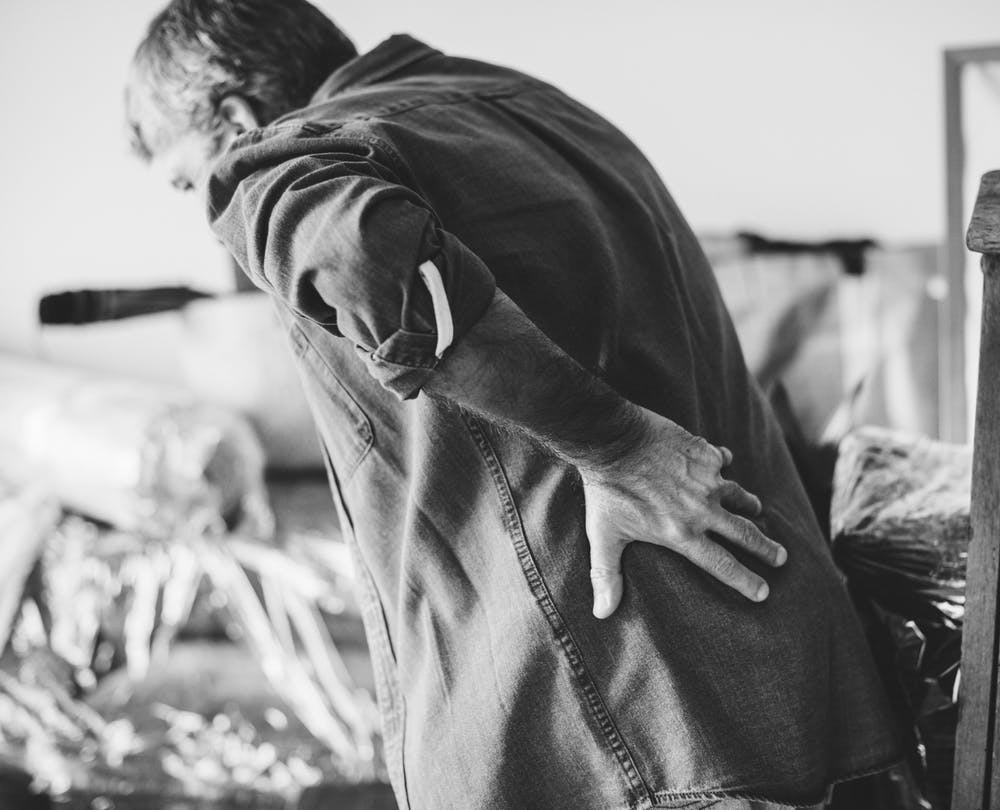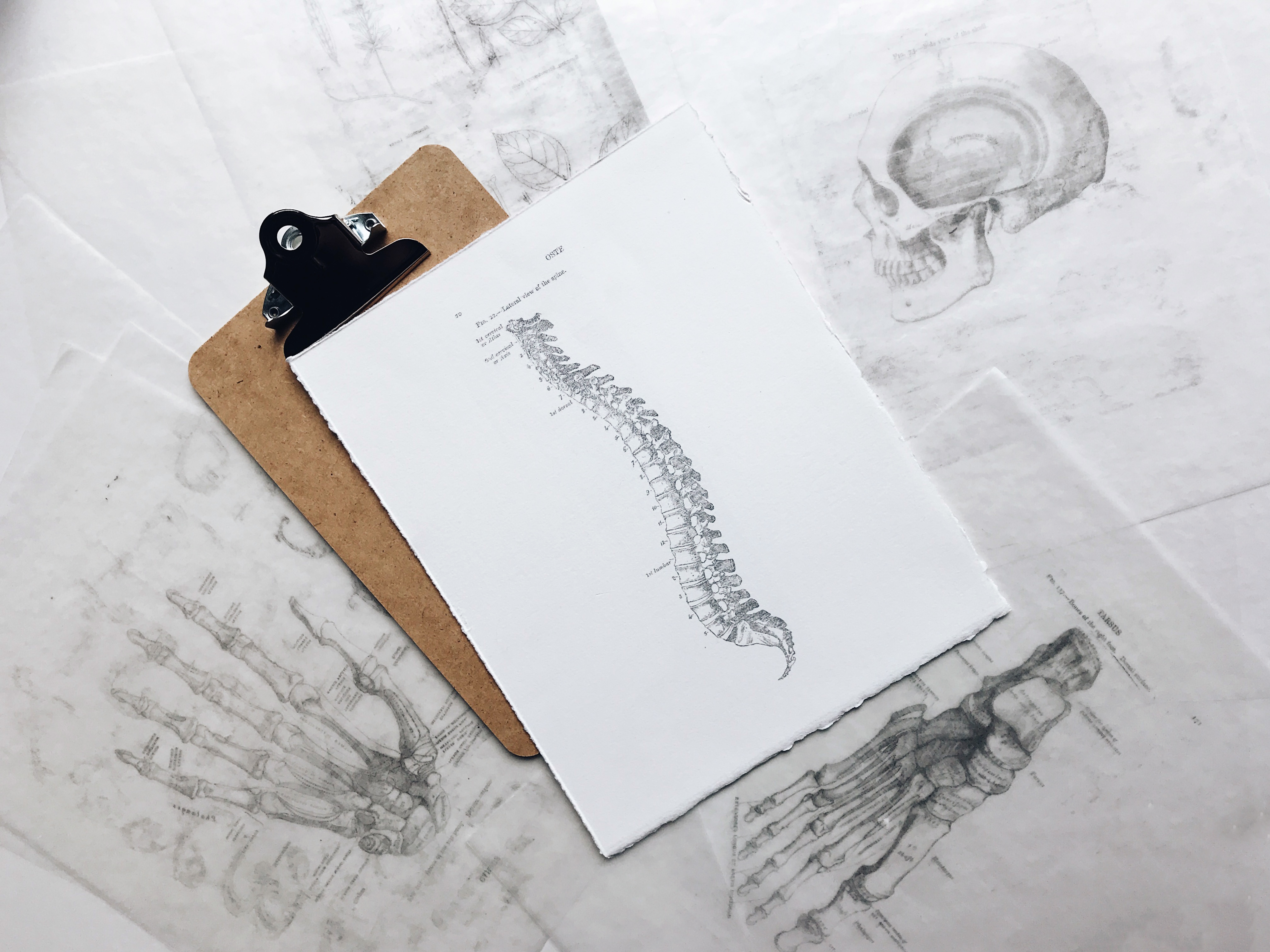Back Pain Prevention & Treatment
Back pain is a fact of life for many people. Research shows that up
to 80% of the population will experience back pain at some point during
their lives.1 It is also the second most common reason for visits to the doctor’s office, outnumbered only by upper-respiratory infections.2
Staying Fit As You Age
Exercise is often prescribed for patients of all ages to reduce complaints about pain in muscles and bones, but some feel it gets harder to exercise as they get older.“For seniors, exercise can also be an incredible way to be social,” says Dr. Scott Bautch, DC, a member of the American Chiropractic Association’s Council on Occupational Health. “The social aspect of exercise is huge. Pilates is becoming more and more popular among older adults. Seniors can interact with each other while they exercise at their local gyms. Nowadays,many gyms have hours of operation that are friendly to seniors.”
How do I start?
- Develop a plan for an exercise program and stick with it. Make your exercise program an integral part of your normal daily activities – or use normal daily activities to help your muscles and bones become as healthy as possible.
- Research shows that “functional exercises”— those that mimic actual daily activities, such as walking up and down stairs and getting in and out of a chair — can be quite effective.
- Some research suggests that people who live in two-story houses are less prone to certain types of heart disease. Repeatedly climbing a flight of stairs or rising from and returning to a seated position helps build leg strength and aerobic fitness. If you hold a weight during these exercises, you can increase your level of physical activity even further.
- Household chores, such as vacuuming, loading and emptying the dishwasher and moving wet laundry from the washer to the dryer can increase strength and flexibility. Lift with your legs, when necessary.
Which fitness program will help me most?
The best exercise program should be tailored to your individual health status. Typically, low-impact activities that keep joints moving and minimize pain, such as walking, swimming and water-based exercise, are effective. Research has shown that exercise can reduce joint stiffness, pain and inflammation associated with arthritic conditions, which affect most of us as we age.
Reprinted with permission from the American Chiropractic Association www.acatoday.org
For more information from the ACA, click here for a Staying Fit as You Age Fact Sheet.
Stay Safe During Winter Activities
Winter recreational activities and chores can pose problems for the outdoor enthusiast whose body is not conditioned. Winter sports like skating, skiing and sledding can cause painful muscle spasms, strains or tears if your body hasn’t been properly warmed up. Even shoveling snow the wrong way, slipping on sidewalks and wearing the wrong kinds of clothing can lead to spasms, strains and sprains.
Computer Ergonomics
Ergonomics for Mouse-Intensive Jobs
Jobs such as graphic design, architecture and computer-aided design rely heavily on the mouse and have their own unique ergonomic issues. These jobs and others that require workers to spend countless hours in front of computers while barely ever changing position are a recipe for injury. Consider the following factors to help change poor work habits and reduce risk factors. Use the Mouse or Input Device Safely. The further you reach to hold and use the mouse, the more strain you place on your neck. There are alternative techniques and equipment that may help.
• Change your position to keep your elbows relaxed at your sides with the mouse directly in front of you, not to the side.
• For precision tasks, move the mouse from the wrist, not the fingers. For tasks not requiring as much precision, try to move the whole arm to avoid overuse.
• Make sure the mouse fits your hand. If it is too small, squeezing the mouse may cause hand cramping. This also places strain on your wrist and may cause pressure on the median nerve in the carpal tunnel.
• Remove watches or bracelets that interfere with movement.
• If you keep resting on your wrist, consider putting a thin gel pad under it for support.
• Adjust your cursor speed. If it is too fast, you will grip the mouse tighter to gain control. If it is too slow, you will repeatedly grasp and pick up the mouse to reposition it.
Adjust Your Monitor
• Center the screen in front of you.
• If you use two monitors and use each screen equally, place them so you are seated where they meet in the middle, so you look to the left and to the right equally.
• If you use one monitor more than the other, place the primary monitor centered in front of you and the secondary monitor directly next to it, slightly angled toward you.
• The screen should be about an arm’s length away.
• Place the top line of the glass of the monitor at eye level. If you use bifocals, lower the screen slightly until your head is level and you are not looking upward.
• To reduce eye strain, adjust the brightness and contrast controls, as well as the ambient room light, to make them equal.
• Avoid glare. Place the monitor perpendicular to windows or draw the blinds. A glare filter can also help.
Sit Properly
• Take the time to adjust the chair to fit you.
• If you have neck or shoulder discomfort, raise the armrest of your chair to support your forearm without pushing the shoulder toward the ear.
• The ideal chair for these types of jobs places you in an upright posture and encourages full arm movement. A pear-shaped back design provides spinal support while freeing your shoulder blade and arm to move properly.
Rest Breaks and Task Rotation
To work properly, muscles need a break to rid themselves of lactic acid and waste products while delivering oxygen to the tissues to prevent overuse and damage. Take 15-second micro-breaks each hour. During the
breaks, shake out your arms and stretch your wrists. Computer users should also frequently look away from
their screen and focus on something about 20 feet away. This allows a break for the eye muscles. If you’re concerned about taking too many breaks, spread out tasks such as walking to the fax and copier, returning phone calls and meeting with co-workers throughout the day. If you continue to experience pain or discomfort while
using a mouse, talk to your doctor of chiropractic and consider having an on-site ergonomic evaluation.
Reprinted with permission from the American Chiropractic Association www.acatoday.org
For more information from the ACA, click here for Healthy Living: Healthy Living Computer_ergonomics
Healthy Living: Walking
Walking: One Step at a Time
While some fitness enthusiasts relentlessly seek out the latest, trendiest exercise crazes, others are returning to good, old fashioned walking to help them feel great and get into shape. Whether enjoying the wonder of nature or simply the company of a friend, walking can be a healthy, invigorating experience. Thanks to its convenience and simplicity, walking just might be right for you, too. And except for a good pair of walking shoes, it requires virtually no equipment. Research shows a sedentary lifestyle has a debilitating effect on our health as we age, therefore exercise is imperative. Walking accomplishes all of the following and more:
• Improves cardiovascular endurance
• Tones muscles of the lower body
• Burns calories
• Reduces risk of heart disease
Selecting Shoes
Too many people choose fashion over function when purchasing running shoes, not realizing that ill-fitting
shoes can do more than hurt their stride; they can also lead to pain throughout the body.
Getting Started
Walking just 12 minutes every other day can offer important health benefits. But in order to increase your longevity, try to work up to 30 minutes, five days per week. Experts generally agree that to be considered “active,” adults should try to take 10,000 steps each day.
Pain and Injury
While you may experience pain or injury in a particular area (such as a knee or a hip), the root of the problem may
lie elsewhere. A problem in the foot or ankle can create an imbalance in every step, leading to discomfort or injury
that moves to the knees, hips, low back or other regions of the body. If you suffer from pain beyond typical muscle
soreness, your doctor of chiropractic can diagnose and treat your pain or injury and get you back on track. Your
chiropractor can also customize a wellness program that is right for you and has the expertise to help keep you
feeling and functioning your best. Be sure to consult your doctor before beginning any exercise program.
Reprinted with permission from the American Chiropractic Association www.acatoday.org
For more information from the ACA, click here for Healthy Living: Walking Fact Sheet ACA_Walking Healthy Living
Health Tips for Gardening
As springtime approaches, weather warms up and leaves turn green, many people will spend more time outside planting bulbs, mowing the lawn and pulling weeds. Gardening can provide a great workout, but with all the bending, twisting, reaching and pulling,your body may not be ready for exercise of the garden variety.Gardening can be enjoyable, but it is important to stretch your muscles before reaching for your gardening tools. The back, upper legs, shoulders and wrists are all major muscle groups affected when using your green thumb.
Garden Fitness Stretches
- Before stretching for any activity, breathe in and out, slowly and rhythmically; do not bounce or jerk your body, and stretch as far and as comfortably as you can.
- While sitting, prop your heel on a stool or step, keeping the knees straight. Lean forward until you feel a stretch in the back of the thigh or the hamstring muscle. Hold this position for 15 seconds. Do this once more and repeat with the other leg
- Stand up, balance yourself, and grab the front of your ankle from behind.Pull your heel toward your buttocks and hold the position for 15 seconds. Do this again and repeat with the other leg.
- While standing, weave your fingers together above your head with the palms up. Lean to one side for 10 seconds, then to the other. Repeat this stretch three times.
- Do the “Hug your best friend.” Wrap your arms around yourself and rotate to one side, stretching as far as you can comfortably go. Hold for 10 seconds and reverse. Repeat two or three times.
Finally, be aware of your body’s technique, form and posture while gardening. Kneel, don’t bend, and alternate your stance and movements frequently.
Reprinted with permission from the American Chiropractic Association www.acatoday.org
For more information from the ACA, click here for a Health Tips for Gardening Fact Sheet.
How to Protect Yourself and Others with Face Coverings
In an effort to highlight the importance to protect oneself and others, please consider the recommendations and resources the CDC has made available regarding Face Coverings outlined below and described fully on their website: CDC recommends
The CDC recommends wearing cloth face coverings in public settings where other social distancing measures are difficult to maintain (e.g., grocery stores and pharmacies), especially in areas of significant community-based transmission.
CDC also advises the use of simple cloth face coverings to slow the spread of the virus and help people who may have the virus and do not know it from transmitting it to others. Cloth face coverings fashioned from household items or made at home from common materials at low cost can be used as an additional, voluntary public health measure.
Cover your mouth and nose with a cloth face cover when around others
- You could spread COVID-19 to others even if you do not feel sick.
- Everyone should wear a cloth face cover when they have to go out in public, for example to the grocery store or to pick up other necessities.
- Cloth face coverings should not be placed on young children under age 2, anyone who has trouble breathing, or is unconscious, incapacitated or otherwise unable to remove the mask without assistance.
- The cloth face cover is meant to protect other people in case you are infected.
- Do NOT use a facemask meant for a healthcare worker.
- Continue to keep about 6 feet between yourself and others. The cloth face cover is not a substitute for social distancing.
Choosing the Best Mattress
Sleep is essential recovery time for the body and the brain, and that’s why a good mattress is incredibly important to your health. You sleep for roughly 25-30 percent of your lifetime, so it’s crucial that your body benefits from this rest. If you’re sleeping on a comfortable and supportive mattress, it makes it easier for your body to reach the necessary, deeper stages of sleep. There are a few factors to take into consideration when choosing the best mattress for your body.
How do I choose the right mattress?
Your mattress should support your body in its natural position, allowing it to rest and recover from the day’s activities. Choosing the right mattress is highly subjective, meaning that you must find the one that works best for you. In order to be most comfortable throughout the night, your body position should be as neutral as possible, which means the shoulders and hips need to sink into the mattress a little, and the mattress needs to meet the waist. You should look for a mattress that is firm enough to support your skeleton, even in a side-lying position, but soft enough that it is truly comfortable.A mattress that is too firm could irritate the hips and shoulders while you are lying down, but one that is too soft can lack the support that your body needs. A mattress that does not support the skeleton properly will create stress on joints in the spine, neck and possibly even the knees, which can result in chronic recurrent pain.
Popular choices today include a good-quality spring mattress with a pillow topper or a dense memory foam mattress. In respect to the latter, many manufacturers have found ways to keep these mattresses from capturing too much body heat, keeping you cool and comfortable throughout the night.When shopping for a new mattress, the best thing you can do is go to a store and personally try out different types of mattresses. If they will let you take a test nap, go for it!
What if I suffer from back pain or have a disability?
Even if you suffer from back pain or a disability, the selection of a mattress is based on what feels best to you. You can reduce any strain on the body further by sleeping on your side with a body pillow, regardless of which type of mattress you decide to purchase.
The upper arm and upper knee should be supported by the pillow in order to keep the spine aligned while you sleep. Maintaining good posture while you sleep will help prevent stress points that may aggravate your joints and the connective tissue that holds your body together. There are also mattresses that exist today specifically for people with special needs, including those with diabetes, so be sure to investigate your options thoroughly.
When is it time to get a new mattress?
If you are waking up every morning feeling sore and stiff, there’s a strong possibility that the source of your pain is your mattress. Likewise, if you find that you sleep better in a hotel bed than at home, then it might be time for a new mattress.To determine if your mattress is a contributing factor to your back pain, lay something rigid across your bed, such as a meter stick. If you can fit your hand or fingers in the gap between the meter stick and the mattress, your mattress is sagging and it’s time to look for a new one.
Another option is to place a marble on your mattress and see if it rolls to where your heaviest spot is, which would also indicate a sagging mattress. It’s important to consider the age of your mattress, as well; most are only productive for about five to seven years.If you cannot afford a good mattress right away, consider reinforcing your mattress by placing some plywood underneath it. This may give you some extra support while you save up and shop. Keep in mind that expensive does not necessarily mean better. Comfort and support are the keys to a good night’s sleep, so make sure to choose a mattress that is comfortable on your skin and supportive to your body. If you can find that combination, that is the mattress for you.
What else can I do to sleep better?
To get your best rest, keep in mind that to maximize the benefits of sleep, it’s important to create a peaceful and restful environment in your bedroom. The body generally needs about two hours to slow down before going to sleep. During this time, power off any electronic devices that emit blue light and take time to relax before crawling onto your brand-new mattress.
Reprinted with permission from the American Chiropractic Association www.acatoday.org
For more information from the ACA, click here for a Choosing the Best Mattress Fact Sheet.
Lumbar Spinal Stenosis
Patients with lumbar spinal stenosis—one of the most common reasons for spinal surgery in older people—are commonly recognized by a bent-forward, shuffling posture and a characteristic small-step gait. Stenosis surgery,however, is a major procedure that is recommended only when conservative methods of care aren’t effective—or when stenosis is caused by such things as tumors or accompanied by intolerable pain or severe neurological problems, such as loss of bowel and bladder function.
What is stenosis?
Spinal stenosis is created by the narrowing of the spinal canal. This narrowing may be caused by mechanical problems or by abnormalities in the aging spine. It may or may not result in low back pain, limping, and/or a lack of feeling in the legs.Stenosis is often a degenerative condition. It may exist for years without causing pain or discomfort, but a fall or an accident can trigger characteristic stenotic pain.Numerous factors can cause stenosis, such as thickened ligaments, expanding infection, abscess, a congenital or developmental anomaly, degenerative changes, vertebral fractures or dislocations, or a spinal cord tumor.Other conditions, such as a herniated disc, can mimic stenosis. While herniated discs usually cause rapid and acute muscle spasm, discomfort caused by stenosis builds gradually. Other conditions that can be confused with stenosis include vascular claudication, peripheral vascular disease, and abdominal aortic aneurysms. Claudication—pain triggered by walking—caused by vascular disease most often occurs after walking a fixed distance. Patients with spinal stenosis, however, walk variable distances before symptoms set in. Activities like riding a bicycle and walking up a hill can cause pain in patients with vascular claudication, but not in those with stenosis. On the other hand, standing makes pain worse for stenotic patients, while it relieves vascular claudication.
How is stenosis diagnosed?
Spinal stenosis can be diagnosed based on the history of symptoms, a physical examination, and imaging tests. An MRI is a very poor predictor of future disability in stenosis. An electrodiagnostic study is more dependable for information on a stenotic spine. To diagnose stenosis caused by an abscess or an infection, blood work analyzed by a laboratory may be required, while vertebral tumors and spinal tumors require finely tuned imaging.Although degeneration is the most common cause of the condition, spinal stenosis can also result from long term steroid use. Degenerative stenosis also has multiple contributing factors, including disc degeneration, disc bulging, bone spur formation around the vertebrae and the facets, thickening of the soft tissues, and bulging around the disc. Some anatomical factors, such as the enlarged, weakened bones caused by Paget’s disease, can complicate both the degenerative process and treatment.
How is stenosis treated?
There are three basic treatment approaches to spinal stenosis: the conservative medical approach, which frequently involves bed rest, analgesics, local heat, andmuscle relaxants; the conservative chiropractic approach, which includes manipulation, exercise and self-care techniques; and surgery. The source of the stenosis often dictates the treatment.
Recent studies show that although stenosis surgery will often have good results for up to two years, in the long run, outcomes are much the same between surgery and conservative care. Some surgeries have to be repeated years later. Many are far from fully satisfactory. Surgery is a complicated procedure that irreversibly changes the structure of the back.In many mild and moderate cases of stenosis, however,non-invasive conservative care, such as chiropractic,can help lessen pain and discomfort, maintain joint mobility, and allow the patient to keep a reasonable lifestyle, at least for some time.A technique called distraction manipulation may be helpful in reducing leg discomfort.
Reprinted with permission from the American Chiropractic Association www.acatoday.org
For more information from the ACA, click here for a Lumbar Spinal Stenosis Fact Sheet.
Your Musculoskeletal Health
The musculoskeletal (MSK) system is the “backbone” of your body, literally. It’s comprised of not only the spine but all your muscles, bones and joints. It’s what gives your body form. It’s what makes it possible for you to move and do the things you enjoy. Keeping this vital system strong is essential for a full and active life. When your MSK system is functioning well, you feel strong and healthier; however, when there’s a problem you might experience pain and even disability. More than one in two adults report experiencing a musculoskeletal condition such as back pain, neck pain, joint pain, arthritis and osteoporosis. They are the most commonly reported medical conditions among those under age 65 and the second most common condition for people age 65 and older.
MSK conditions become more common as we age, sometimes limiting our ability to move and accomplish everyday activities. This can affect overall health negatively by contributing to lack of physical activity, which can in turn lead to obesity and chronic conditions such as Type 2 diabetes and hypertension. MSK pain and disability can also lead to problems such as social isolation, depression and even loss of independence. Nurturing musculoskeletal health over a lifetime begins with good nutrition, adequate hydration and healthy habits such as regular rest and physical activity. Prevention is also key; we can reduce the risk of pain and injury by improving our posture and movement techniques as well the ergonomics of our work and home environments.
Steps to Strength
•Move more.
•Eat a balanced diet.
•Go outside!
•Do weight-bearing exercises.
•Stay hydrated.
•Quit smoking.
•Don’t drink too much alcohol.
Steps to Stability
•Lead an active lifestyle, which contributes to a higher level of physical fitness and better spinal control as we age.
•Practice good posture. It helps keep bones and joints in correct alignment so our muscles work more efficiently, saving energy and reducing fatigue while decreasing the abnormal wearing of joint surfaces that can lead to degenerative arthritis and joint pain.
•Maintain a healthy weight. Being overweight can put stress on joints, especially as we age, leading to an increased risk of injury. However, being underweight can increase the risk of bone loss and fracture.
•Make your environment MSK-friendly to promote good posture and prevent strain. .
•Improve movement techniques to avoid strain and injury. Lifting tip: When picking up heavy items from the floor, do not bend over at the waist; instead, kneel down on one knee, as close as possible to the item you are lifting, with the other foot flat on the floor and pick up the item. Alternatively, bend both knees, keeping the item close to your body, and lift with the legs.
•Limit screen time. Neck pain and poor posture can result from spending too much time looking down at your tablet or cellphone. Spend less time on mobile devices and do stretch and extension exercises regularly. Bring your shoulder blades together and stand up tall.
•Be proactive and prevent falls. Remove throw rugs, low furniture, cords and other trip hazards on the floor; review medications with your doctor that could affect balance;have your vision checked; and start an exercise routine to improve strength, balance, coordination and flexibility.
Reprinted with permission from the American Chiropractic Association www.acatoday.org
For more information from the ACA, click here for a Your Musculoskeletal Health Fact Sheet.










